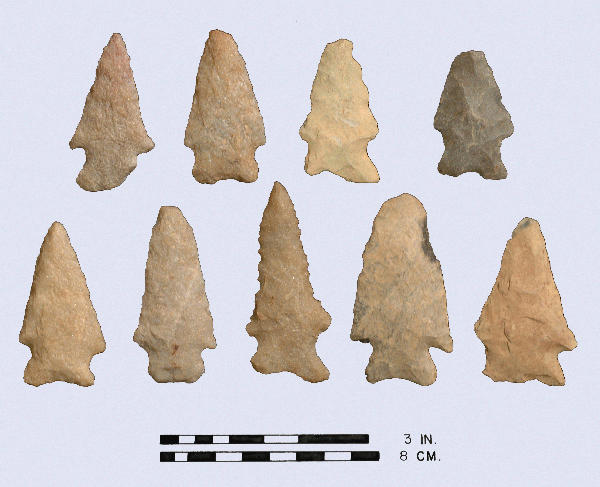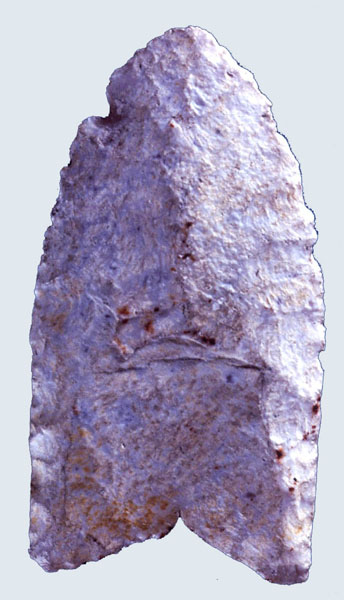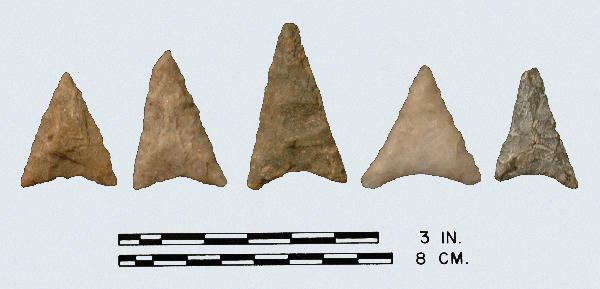
Kirk Stemmed: Tow Row: quartzite, quartzite, rhyolite, rhyolite; Bottom Row: quartzite, quartzite, quartzite, rhyolite, tuff.
Type Corner Notched Early-Archaic
Defining Attributes
The Kirk Stemmed point has a long, dagger-like blade with deep serrations and a broad stem.
Chronology
The Kirk Stemmed point dates to the Early Archaic period, 6800 to 6100 BCE. Coe (1964) considers this type to be midway between the Kirk Corner Notched and the Kirk Serrated types. Broyles (1971) dates this type to around 6800 BCE based on excavations at the St. Albans site in Kanawha County West Virginia.
Description
- Blade: The blade is long, narrow and thick with straight or incurvate edges. Usually, the edges are concave toward the base but re-curved toward the tip. Serrations are deep, especially in the concave area.
- Base: The base may be straight or slightly rounded and occasionally slightly concave. Broad notches produce a stem that expands slightly toward the base and shoulders that project slightly backward.
- Size: Length ranges from 45 to 150 mm. Width averages 25 to 50 mm. Thickness ranges from 6 to 15 mm.
- Technique of manufacture: The basic blade appeared to have been made with broad, shallow percussion flakes. The edges were then shaped by pressure flaking, and the serrations were made as a final step.
Discussion
Coe (1964) placed the point between Kirk Corner Notched and Kirk Serrated types. McAvoy (1997) along the Nottoway River, Virginia places the type at 6700 BCE.
Defined in Literature
Coe (1964) originally defined the type based on points recovered from the Hardaway Site in the Piedmont of North Carolina. Broyles (1971) also discusses this point type based on points recovered from the St. Albans site in West Virginia.
References




